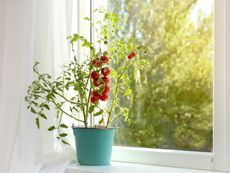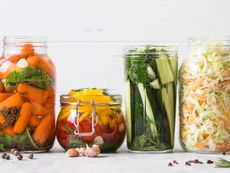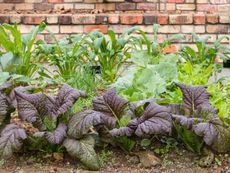Problems Growing Vegetables: Common Vegetable Plant Diseases And Pests


Growing a vegetable garden is a rewarding and fun project but unlikely to be free from one or more common veggie problems. Try as you might, your garden is likely to be afflicted with any number of vegetable garden pests or plant diseases.
Common Veggie Problems
Problems growing vegetables may run the gamut from the more obvious vegetable garden pests or plant diseases to issues related to the environment like weather conditions, nutrition, and even those caused by people or animals. Proper irrigation, fertilization, location, and when possible, the choice to plant disease-resistant varieties can aid in creating your own little Garden of Eden.
Vegetable Plant Diseases
There are a plethora of plant diseases that may afflict the veggie garden. These are merely a handful that are commonly found in gardens. Clubroot - Clubroot is caused by the pathogen Plasmodiophora brassicae. Vegetables affected by this common disease include:
Damping off - Damping off, or seedling blight, is another common disease seen in most veggies. Its source may be Aphanomyces, Fusarium, Pythium, or Rhizoctonia in origin. Verticillium wilt - Verticillium wilt may afflict any number of veggies from any of the Brassicae (except broccoli) family to:
White mold - White mold is another common disease found in many crops and is inflicted by the pathogen Sclerotinia sclerotiorum. These include:
Other diseases such as cucumber mosaic virus, root rot, and bacterial wilt may cause wilting of foliage with dead areas apparent and mottled fruit.
Vegetable Garden Pests
Other problems one may encounter when growing vegetables are caused by insect infestations. Some of the most common invaders that can be found in the vegetable garden include:
Gardening tips, videos, info and more delivered right to your inbox!
Sign up for the Gardening Know How newsletter today and receive a free download of our most popular eBook "How to Grow Delicious Tomatoes."
- Aphids (feed on almost any type of crop)
- Stinkbugs (damage foliage on veggies as well as fruit and nut trees)
- Spider mites
- Squash bugs
- Seedcorn maggots
- Thrips
- Whiteflies
- Nematodes, or root knot disease (causes galls to form on carrots and stunt coriander, onion, and potato crops)
Environmental Vegetable Garden Issues
Beyond diseases and pests, gardens are susceptible to problems caused by temperatures, drought or over-irrigation, and nutrient deficiencies.
- The end result of all of the previously mentioned, blossom end rot (common in tomatoes, squash, and peppers) is a calcium deficiency caused by moisture fluxes in the soil or the application of too much nitrogen fertilizer. Avoid over-fertilization and use mulch to retain soil moisture and water during periods of drought.
- Edema is a common physiological problem found when the ambient temps are cooler than soil temps, and soil moisture is high with high relative humidity. Leaves often look as if they have “warts” and afflict lower, older leaf surfaces.
- A plant going to seed, otherwise known as bolting, is extremely common. Plants prematurely flower and elongate as temperatures rise and the days get longer. To avoid this, be sure to plant bolt-resistant varieties in the early spring.
- If plants fail to set fruit or drop blossoms, temperature variables are also most likely the culprit. Snap beans may fail to flower if temperatures are over 90 F. (32 C.) but may resume blooming if temps cool down. Tomatoes, peppers, or eggplant are also affected by temperature fluctuations which can inhibit blooming or production.
- Low temps of between 50-60 F. (10-15 C.) may cause the fruit to become misshapen. Cool temps or low soil moisture may cause cucumbers to grow crooked or oddly shaped.
- Poor pollination may also cause irregularly shaped kernels to form on sweet corn. To encourage pollination, plant the corn in blocks of multiple short rows rather than one long row.

Amy Grant has been gardening for 30 years and writing for 15. A professional chef and caterer, Amy's area of expertise is culinary gardening.
-
 Want a Backyard Mini Orchard? Create Your Own Container Orchard
Want a Backyard Mini Orchard? Create Your Own Container OrchardEasier to care for in small spaces, a backyard mini-orchard makes sense for busy gardeners and juicy fruit is the reward.
By Teo Spengler
-
 Urban Beekeeping Guide: Top Tips For Raising Bees In The City
Urban Beekeeping Guide: Top Tips For Raising Bees In The CityUrban beekeeping can be a rewarding and appreciated pastime, but first be sure it’s legal in your city and learn the ropes of beekeeping.
By Mary Ellen Ellis
-
 How Many Vegetables To Plant Per Person For A Year
How Many Vegetables To Plant Per Person For A YearGauging how much to plant in a vegetable garden can eliminate waste while still producing enough for your family. Click for more.
By Bonnie L. Grant
-
 13 Perennial Fruits And Vegetables You Only Have To Plant Once
13 Perennial Fruits And Vegetables You Only Have To Plant OnceLooking to set it and forget it? Find out which fruits and vegetables can be grown as perennials.
By Laura Miller
-
 11 Edible Plants For A Year-Round Garden In A Bucket
11 Edible Plants For A Year-Round Garden In A BucketWant to know how to grow food inside your house and which foods do best indoors? Click here to learn all about it.
By Bonnie L. Grant
-
 Frost Tolerance Of Vegetables From Least To Most Hardy
Frost Tolerance Of Vegetables From Least To Most HardyHow cold can vegetables tolerate? Knowing which veggies will survive frosts and freezes is essential for the success of your garden. Click here for more.
By Laura Miller
-
 Best Vegetables To Pickle Straight From The Garden
Best Vegetables To Pickle Straight From The GardenPickles aren’t limited to just cucumbers. Read on for tips on pickling your fresh veggies.
By Amy Grant
-
 Benefits Of Planting In Fall Vs. Spring Vegetable Plots
Benefits Of Planting In Fall Vs. Spring Vegetable PlotsLearn why some vegetables do better if you plant them in fall instead of spring.
By Laura Miller
-
 Interplanting Vegetables In The Fall Garden
Interplanting Vegetables In The Fall GardenLearn all about the benefits of interplanting vegetables for your fall garden.
By Laura Miller
-
 Best Vegetables For Growing In Perlite
Best Vegetables For Growing In PerlitePerlite is a natural growing medium that comes from super-heated volcanic glass. In some cases, it works better than soil. Read on for more info.
By Laura Miller